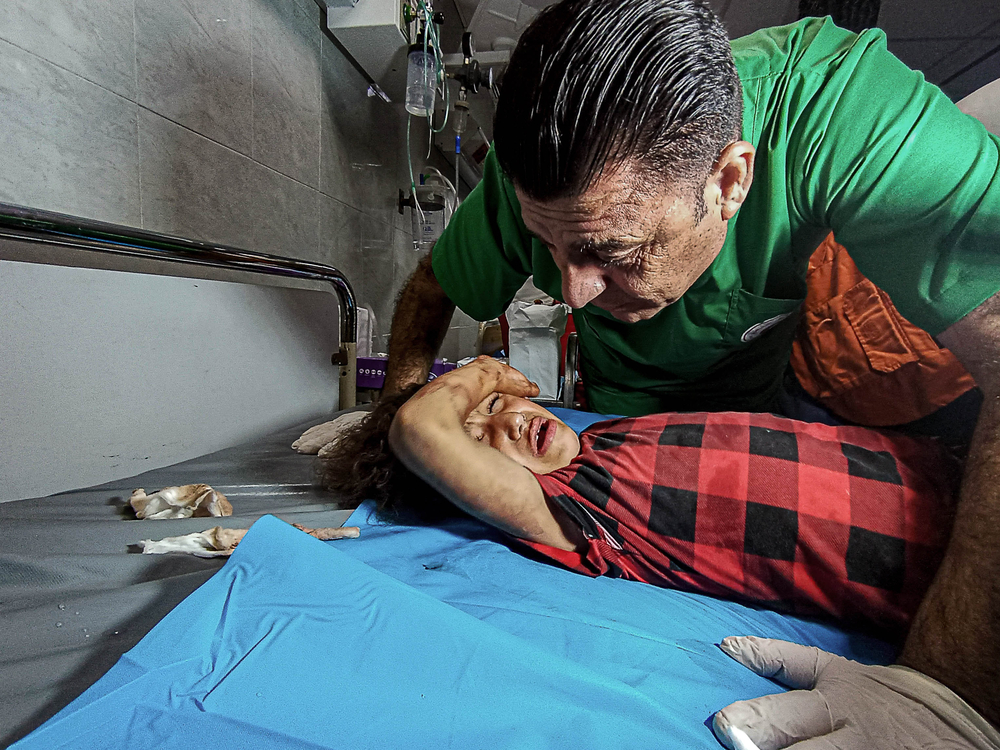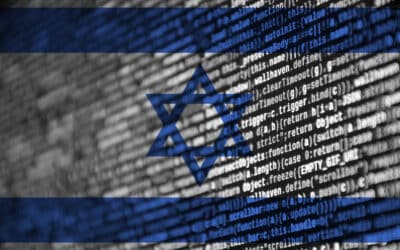People are by now firmly entrenched in their respective positions regarding the conflict raging in Gaza since October 7, 2023. The Hamas attacks on that day have served as the pretext for a “war” on the Palestinian people for the past seven months. The announcement that the ICC (International Criminal Court) has applied for arrest warrants against Israeli Prime Minister Benjamin Netanyahu and Hamas leader Yahya Sinwar, along with their highest-level associates (asserting, in other words, that both sides are wrong) is unlikely to change anyone’s mind about what is going on.
Many American leaders, including President Joe Biden and Speaker of the House Mike Johnson, have predictably rejected the ICC’s claims, insisting that the government of Israel has done no more than assert its right to national self-defense. Obviously, if the U.S. government is furnishing Israel with the means by which to commit crimes against humanity (including war crimes), then the U.S. government is itself guilty of aiding and abetting those crimes. So no one should be surprised by the official responses of Biden and Johnson, the latter of whom appears to be drafting plans to punish the ICC through some form of legislative retaliation.
Not everyone is directly complicit in the bloodbath in Gaza, yet some among those with no vested interests are equally adamant that Israel has done nothing wrong. I recently met a woman in Spain who exclaimed what appears to be a common sentiment among members of the pro-Israel camp: “They started it!” She was referring, of course, to Hamas, not what has been going on in Israel for decades. To my calm observation that half of those killed since October 2023 have been children, I received a reply not unlike that of President Barack Obama’s press secretary, Robert Gibbs, who blurted out, in response to the question whether Abdulrahman al-Awlaki, the sixteen-year-old son of Anwar al-Awlaki, had been intentionally killed by the U.S. government:
“I would suggest that you should have a far more responsible father if they are truly concerned about the well-being of their children. I don’t think becoming an Al-Qaeda jihadist terrorist is the best way to go about doing your business.” (We Kill Because We Can, p. 137)
Attempting to reason with such people may be a lost cause. But, even within the respective camps regarding the highly polarizing crisis in Gaza, important issues remain unresolved.
Many critics, including not only plaintiffs at the South African International Court of Justice tribunal, but also thousands of protesters on U.S. college campuses, and around the world, have alleged that the Israeli government is perpetrating a genocide. For his seemingly unrelenting support of the massacre of Palestinians, even while providing some “humanitarian aid” for those who manage to survive, President Joe Biden has been christened Genocide Joe by his antiwar critics in the United States. The densely populated Gaza strip has indeed been bombed using weapons furnished by the U.S. government, and images of entire neighborhoods reduced to rubble have been shared throughout many social media platforms. Mass graves have been discovered, and children are being killed in many if not all of the missile strikes said to target militant members of Hamas. So indiscriminate have the bombing campaigns been that even Israeli hostages have been killed. There is no room for debate whether mass homicide has taken place, for it has. But is this a genocide?
The statement issued by the ICC does not include the word genocide. That court alleges that the adversaries on both sides have committed war crimes and crimes against humanity. Perhaps the focus at this point should not be on the linguistic issue of whether the crimes in question are properly labeled a genocide, such as was perpetrated in 1940s Germany. Those who deny that what is taking place is a genocide point out that a true genocide would have killed not 35K but 350K or even millions of people. Is it the intention of Israeli leaders to wipe all Palestinians off the map? If so, then they must be incredibly incompetent, for after an initial onslaught resulting in some 33,000 deaths, the number of casualties has risen relatively slowly. To point this out is not to deny or diminish the moral atrocities being committed in Gaza, but to insist that mass murder and crimes against humanity are equally abhorrent, whatever else one wishes to label them, and playing the genocide card does nothing to call a halt to what has become an inexorable military rampage.
Among the genocide “deniers” (or agnostics) are not only Zionists and other supporters of Israel, but also those such as myself who view the genocide debate as a distraction from the moral abominations to which the people of Gaza are being subjected. The number of people being killed is astounding, but debating whether the estimates of deaths are too high or too low altogether neglects the most important part of this story, which must be addressed if anyone is ever to get to the root problem with all of what is going on. What has been altogether missing from this debate in the mainstream media, which focuses primarily on numbers of casualties, is the perspective of the people on the ground.
In The Drone Eats with Me: A Gaza Diary, published ten years ago, in July 2015, Atef Abu Saif shares his experience of living in Gaza during the 2014 “war” on the Palestinian people. Upon reading this work, it becomes obvious how one-sided the situation is and how absurd it is to pretend that what is taking place amounts to anything more than the Israeli government’s commission of mass homicide with impunity under cover of the honorific term war. Yes, there are perpetrators of crimes to be pursued, just as there were after September 11, 2001, but the means adopted by the government in both cases have been collectively to punish large numbers of entirely innocent people for being somehow related—primarily by race, religion, or skin color—to the suspected criminals.
The utter helplessness of most Palestinians emerges through Saif’s work, as it becomes clear that these people have no shields to protect themselves, much less offensive weapons with which to fight back. In what sense, then, is this a war at all? Instead, it is a purge, the indiscriminate use of deadly force to attempt to eliminate the bad guys but with next to no concern for the people who happen to be located in the same vicinity as them.
“Every single human being in Gaza, whether walking on foot, riding a bicycle, steering a toktok, or driving a car, is a threat to Israel now. We’re all guilty until proven otherwise, and how are we ever going to do that, whether alive or not? Your innocence doesn’t matter—you have to abandon that. Survival is your only care.” (The Drone Eats With Me, p. 12)
This diary from 2014 Gaza offers a window onto a world of which most people are entirely ignorant—whether they support Israel or not. To understand this form of “warfare” one must appreciate what the direct victims have been made to endure. As Saif relays it, the nightmarish experience is akin to a horror movie where the monster has become the government itself, imposing its implacable will on people who have no means by which to stop any of what they are being subjected to. They are continually watching homes disappear and body parts being dug out from rubble. They watch as funerals are bombed, under the assumption that terrorist “associates” will be present there. They witness in horror as not only homes but also hospitals and schools and modern structures once a source of pride are destroyed. They wait in line for hours for food and water and live without electricity much of the time.
The book may as well have been written in 2024, for the Israeli government appears to be following the very same playbook as they did in 2014. What is most disturbing in this account is how the people living under bombing are being systematically ground down and demoralized to the point where their very humanity is under assault. Those who are lucky enough to survive—for it is manifestly a matter of luck, as Saif himself repeatedly observes—have been made to live under enormous stress for months on end, treated as though they have no moral worth whatsoever. They have no ability to plan for the future, much less the next day, because they are constantly made to jump at the behest of their masters, from one place to another in the hopes of preserving their lives, in what looks from their perspective more like a hunt than a war. The quest to survive becomes the primary focus of these people’s lives, eclipsing any other aspirations and dreams which they may have formerly held dear. Anything that marked them as individuals, their personal projects and plans, has been postponed, if not entirely effaced, as they struggle simply to make it to the next day. They become a mass of indistinguishable targets and collateral damage victims, a blob of undifferentiated humanity being snuffed out because a small number of “their group” committed crimes.
Anyone familiar with the details of how the Nazis operated will recognize in The Drone Eats with Me the very same dehumanizing uses of induced uncertainty and fear, conjoined with authoritative arbitrariness constraining and contorting and undermining every positive aspect of these people’s lives and ultimately demeaning the people themselves. As in 2024, the people living in some areas of Gaza in 2014 were warned via scripted Israeli messages to follow their (self-contradictory) orders, or else die:
“In the middle of listening to music at my friend Wafi’s house, we hear the broadcast cut short suddenly and the voice of an Israeli general, threatening the people of Rafah. Any person walking in the street, any person driving a car will be hit. After the wavelength is given back to the station, we hear a flurry of new reports including the head of the hospital in Rafah explaining that the Israeli army told them to evacuate the hospital immediately and to carry all the sick and injured into the street…” (The Drone Eats With Me, p. 137)
The day-to-day stress caused to the survivors of a seemingly endless series of threats and bombing attacks (in 2014, it lasted fifty-one days) would take its toll on anyone. In some ways even worse is the sheer unpredictability and arbitrariness of all of what the Gazans must confront, along with the consistent humming of lethal drones overhead, posed to strike without warning and on a schedule determined by an utterly inscrutable calculus—whether decisions by operators and their commanders or by algorithmically programmed machines. Given the number of innocent people being destroyed and terrorized, all of this appears from the ground to be a matter of mere caprice.
Understandably enough, just as in the U.S. Global War on Terror, some of the persons under siege, including Atef Abu Saif’s brother Naeem, end up being radicalized, vowing to fight fire with fire and ultimately destroyed for allying themselves with what the government has decried as the evil enemy. There is a sense in which it all becomes a perverse homicidal trap: oppress people long enough and subject them continually to what they can only interpret as flagrant injustice, and eventually they will rise up in anger to claim to support the perpetrators of crimes (in 2014, a small group of extremists; in 2023, Hamas), thereby rendering themselves fair game for summary execution.
The Drone Eats With Me vividly illuminates what is going on in Gaza today, and the causal connection between brutal and indiscriminate crackdowns, the ongoing and ominous threat of death against innocent people, and the emergence of a fresh slate of young persons willing to sacrifice their own lives in order to call a halt to the government’s assault on their people. It never works, of course, as both the War on Terror and the decades-long struggle in Israel clearly display. More oppression creates more radical dissidents, who commit crimes used to rationalize the government’s perpetration of more crimes and further oppression of those who remain.
Despite directly relaying the experience of life in Gaza under bombing, this memoir also lucidly explains what happened in Iraq, when previously nonviolent young men decided to take up arms against the invaders of their land. It is difficult to fathom the depth of courage and the indomitable spirit of the people who both refuse to give up, and refuse to allow their nemesis to create them in its own image. Those who succumb to the stress, crack under pressure, and opt to take up arms in equally indiscriminate ways, become the pretext for yet more purges and oppression. But many of the nonviolent survivors stand their ground and continue to hope for a better day, when the business of their lives may no longer be consumed by a desperate quest simply not to be killed.
Sadly, it is becoming increasingly doubtful that such a day will ever arrive, so long as those who continue to send implements of homicide to Israel preserve their utter ignorance of the true nature of the crimes being committed there. Many people have been killed, in atrocious ways, and some have suffered slowly before passing away. But if this crisis is ever to be resolved, it must finally be acknowledged that the crimes against the survivors are just as reprehensible as the erasure of those who met their death at the end of a missile leaving body parts and dust in the place of what once were human beings.
The persons who suffered under rubble before dying can be said to have been physically tortured to death. But many of the physical survivors of these bombing campaigns are being psychologically tortured to the point where they become grateful even to look up in the sky and see no drones, affording them a brief respite from the constant, overbearing threat of death, enhanced by the omnipresent stench of decomposing flesh.
Knowing all of this, debating over the subjective intentions of individuals such as Benjamin Netanyahu, and the attendant question “Is it a genocide?” seems to miss the most important part of what is going on. People will continue to quibble over definitions and ascribe evil or good intentions to the killers, but answering the genocide question in the negative in no way mitigates the moral abomination of what is being done to sentient, conscious human beings under a nearly constant threat of annihilation, hoping always for a ceasefire so that they can get back to any semblance of a normal life but having no control whatsoever over whether that will ever transpire.
The hallmark of a tyrant is the capricious and vicious imposition of his will on persons who are less powerful than is he. Looking at the details of what is being done not only to the physical victims but also the survivors in Gaza, it is undeniable that they are being tyrannized and terrorized through the arbitrary threat of death which they are made to face each day.
“Our fates are all in the hands of a drone operator in a military base just over the Israeli border. The operator looks at Gaza the way an unruly boy looks at the screen of a video game. He presses a button and might destroy an entire street…The drone keeps us company all night long. Its whirring, whirring, whirring, whirring is incessant—as it wants to remind us it’s there it’s not going anywhere. It hangs just a little way above our heads.” (The Drone Eats With Me, pp. 30-1)
The fact that the Israeli government, in its assiduous pursuit of Hamas, has been willing to kill even some of the Israelis taken hostage on October 7, 2023, reveals that they attach far more importance to the enemy than to those who find themselves trapped amidst a free-for-all killing spree with no means to protect themselves in what bears far more resemblance to a torture chamber than a battlefield.
































